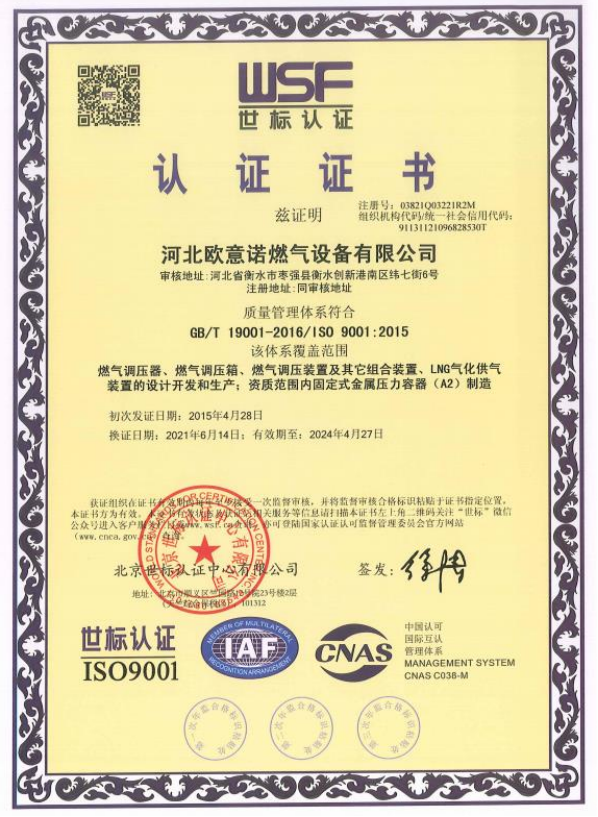
Aug . 01, 2024 01:58
Back to list
Understanding Pressure Relief Equipment and Its Importance in Safety Management Systems
Understanding Pressure Relief Equipment Importance and Applications
Pressure relief equipment is essential in various industrial processes to maintain safety and prevent catastrophic failures. This type of equipment is designed to protect vessels, pipelines, and systems from excessive pressure that could lead to dangerous situations, including explosions, leaks, and equipment failures.
At its core, pressure relief equipment can be classified into two main categories relief valves and rupture discs. Relief valves are mechanical devices that automatically release excess pressure from a system when it exceeds a predetermined threshold. They then reseat themselves when the pressure returns to safe levels. Conversely, rupture discs are designed to fail at a specific pressure rating, allowing the contained material to escape and thereby alleviating the pressure buildup.
.
Another significant application of pressure relief equipment can be found in the chemical manufacturing industry. Many chemical processes involve exothermic reactions that can generate considerable heat and pressure. In these scenarios, pressure relief systems are vital for controlling the operational environment, preventing runaway reactions that could compromise safety and product quality.
معدات تخفيف الضغط

Compliance with stringent regulations is another critical aspect of pressure relief equipment. Regulatory bodies, such as the American Society of Mechanical Engineers (ASME) and the Occupational Safety and Health Administration (OSHA), set forth guidelines and standards that organizations must adhere to regarding the design, installation, testing, and maintenance of pressure relief devices. Adhering to these regulations is not just a legal obligation but a business imperative to avoid liability and ensure operational continuity.
Moreover, advancements in technology have significantly improved the efficiency and reliability of pressure relief equipment. Digital pressure monitoring systems can provide real-time data, allowing operators to detect potential overpressure scenarios before they escalate. Integrating these systems with automated safety protocols can lead to improved response times and the implementation of preventive measures, making industrial processes safer than ever.
In addition to the operational applications, training and education surrounding pressure relief are critical aspects of an organization's safety culture. Employees must be adequately trained to understand the importance of these devices, recognize potential signs of pressure issues, and know how to respond in emergencies. A culture of safety can also foster better practices around maintaining and inspecting these vital systems, ultimately leading to fewer incidents and longer equipment lifespans.
In conclusion, pressure relief equipment plays a crucial role in safeguarding various industries from the dangers of excessive pressure. By implementing reliable pressure relief systems, adhering to regulatory standards, embracing technological advancements, and fostering a culture of safety through employee training, organizations can mitigate risks and ensure safe operational practices. The significance of pressure relief equipment cannot be overstated, as it serves as a first line of defense against potentially catastrophic events in an increasingly complex industrial landscape.
Latest news
-
Safety Valve Spring-Loaded Design Overpressure ProtectionNewsJul.25,2025
-
Precision Voltage Regulator AC5 Accuracy Grade PerformanceNewsJul.25,2025
-
Natural Gas Pressure Regulating Skid Industrial Pipeline ApplicationsNewsJul.25,2025
-
Natural Gas Filter Stainless Steel Mesh Element DesignNewsJul.25,2025
-
Gas Pressure Regulator Valve Direct-Acting Spring-Loaded DesignNewsJul.25,2025
-
Decompression Equipment Multi-Stage Heat Exchange System DesignNewsJul.25,2025

